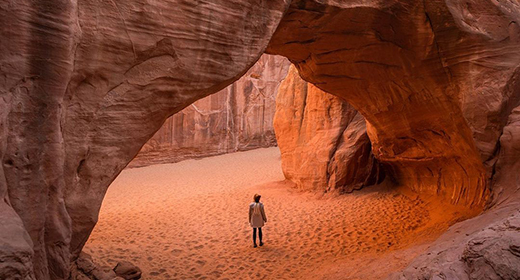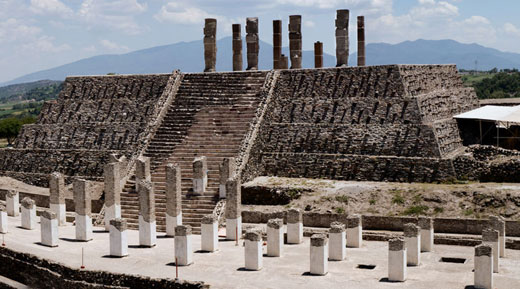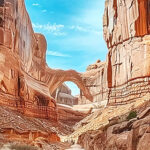In the hundred years since the birth of Paramahansa Yogananda, this beloved world teacher has come to be recognized as one of the greatest emissaries to the West of India’s ancient wisdom…
His life and teachings continue to be a source of light and inspiration to people of all races, cultures and creeds.
Paramahansa Yogananda was born Mukunda Lal Ghosh on January 5, 1893, in Gorakhpur, India, into a devout and well-to-do Bengali family. From his earliest years, it was evident to those around him that the depth of his awareness and experience of the spiritual was far beyond the ordinary.
Both his parents were disciples of Lahiri Mahasaya, the renowned master who was instrumental in reintroducing Kriya Yoga in modern India. When Yogananda was an infant in his mother’s arms, Lahiri Mahasaya blessed him and foretold: “Little mother, thy son will be a yogi. As a spiritual engine, he will carry many souls to God’s kingdom.”
In his youth Mukunda sought out many of India’s sages and saints, hoping to find an illumined teacher to guide him in his spiritual quest. It was in 1910, at the age of seventeen, that he met and became a disciple of the revered Swami Sri Yukteswar Giri (right). In the hermitage of this great master of yoga he spent the better part of the next ten years, receiving Sri Yukteswar’s strict but loving spiritual discipline.
At their very first meeting, and on many occasions thereafter, Sri Yukteswar told the young disciple that he had been chosen as the one to disseminate the ancient science of Kriya Yoga in America and worldwide.
After graduating from Calcutta University in 1915, Mukunda took formal vows as a monk of India’s venerable monastic Swami Order, at which time he received the name Yogananda (signifying bliss, ananda, through divine union, yoga). His ardent desire to consecrate his life to the love and service of God thus found fulfillment.
Beginning of a World Mission
Yogananda began his life’s work with the founding, in 1917, of a “how-to-live” school for boys, where modern educational methods were combined with yoga training and instruction in spiritual ideals. The Maharajah of Kasimbazar made available his summer palace at Ranchi (about 250 miles from Calcutta) as the site for the school. Visiting the school a few years later, Mahatma Gandhi wrote: “This institution has deeply impressed my mind.”
One day in 1920, while meditating at the Ranchi school, Yogananda had a divine vision showing him that now was the time to begin his work in the West. He immediately departed for Calcutta, where the next day he was invited to serve as India’s delegate to an international congress of religious leaders convening later that year in Boston. Sri Yukteswar confirmed that the time was right, saying: “All doors are open for you. It is now or never.”
Shortly before his departure, Yogananda was visited by Mahavatar Babaji, the deathless master who revived in this age the ancient science of Kriya Yoga. “You are the one I have chosen to spread the message of Kriya Yoga in the West,” Babaji said to Yogananda. “Long ago I met your guru Yukteswar at a Kumbha Mela; I told him then I would send you to him for training. Kriya Yoga, the scientific technique of God-realization, will ultimately spread in all lands, and aid in harmonizing the nations through man’s personal, transcendental perception of the Infinite Father.”
The young swami arrived in Boston in September 1920. His first speech, made to the International Congress of Religious Liberals, was on “The Science of Religion,” and was enthusiastically received. That same year he founded Self-Realization Fellowship to disseminate worldwide his teachings on India’s ancient science and philosophy of Yoga and its time-honored tradition of meditation. The first SRF meditation center was started in Boston with the help of Dr. and Mrs. M. W. Lewis and Mrs. Alice Hasey (Sister Yogmata), who were to become lifelong disciples.
For the next several years, he lectured and taught on the East Coast; and in 1924 embarked on a cross-continental speaking tour. Reaching Los Angeles in early 1925, he established there an international headquarters for Self-Realization Fellowship atop Mt. Washington, which became the spiritual and administrative heart of his growing work.
A Pioneer of Yoga in the West
From 1924–1935, Yogananda traveled and lectured widely, speaking to capacity audiences in many of the largest auditoriums in America — from New York’s Carnegie Hall to the Los Angeles Philharmonic Auditorium. The Los Angeles Timesreported: “The Philharmonic Auditorium presents the extraordinary spectacle of thousands….being turned away an hour before the advertised opening of a lecture with the 3000-seat hall filled to its utmost capacity.”
Yogananda emphasized the underlying unity of the world’s great religions, and taught universally applicable methods for attaining direct personal experience of God. To serious students of his teachings he taught the soul-awakening techniques of Kriya Yoga, initiating more than 100,000 men and women during his thirty years in the West.
Among those who became his students were many prominent figures in science, business, and the arts, including horticulturist Luther Burbank, operatic soprano Amelita Galli-Curci, George Eastman (inventor of the Kodak camera), poet Edwin Markham, and symphony conductor Leopold Stokowski. In 1927, he was officially received at the White House by President Calvin Coolidge, who had become interested in the newspaper reports of his activities.
In 1929, during a two-month trip to Mexico, he planted the seeds for future growth of his work in Latin America. He was welcomed by the president of Mexico, Dr. Emilio Portes Gil, who became a lifelong admirer of Yogananda’s teachings.
By the mid-1930s, Paramahansaji had also met quite a few of the early disciples who would help him build the Self-Realization Fellowship work and carry the Kriya Yoga mission forward after his own lifetime was over — including two whom he appointed to be his spiritual successors as president of Self-Realization Fellowship: Rajarsi Janakananda (James J. Lynn), who met the Guru in Kansas City in 1932; and Sri Daya Mata, who had attended his classes in Salt Lake City the previous year.
Other disciples who attended his lecture programs during the 1920s and ‘30s and stepped forward to dedicate their lives to the SRF work were Dr. and Mrs. M. W. Lewis, who met him in Boston in 1920; Gyanamata (Seattle, 1924); Tara Mata (San Francisco, 1924); Durga Mata (Detroit, 1929); Ananda Mata (Salt Lake City, 1931); Sraddha Mata (Tacoma, 1933); and Sailasuta Mata (Santa Barbara, 1933).
Thus, for many years after Yogananda’s passing, and continuing to this day, Self-Realization Fellowship has been guided by disciples who received Paramahansa Yogananda’s personal spiritual training.
Yogananda’s talks and classes in the earliest years of his ministry were recorded only intermittently. However, when Sri Daya Mata (who later became president of his worldwide organization) joined his ashram in 1931, she undertook the sacred task of faithfully recording Yogananda’s hundreds of lectures, classes, and informal talks so that his wisdom and inspiration could be preserved in their original power and purity and published by Self-Realization Fellowship for generations to come.
Return to India
In 1935, Yogananda returned to India for a last visit with his great guru (right). (Sri Yukteswar passed away on March 9, 1936.) Traveling by ship and automobile through Europe, Palestine, and Egypt, he arrived in Bombay in the summer of 1935.
During Yogananda’s year-long sojourn in his native land, he gave classes and Kriya Yoga initiation in cities throughout the subcontinent. He also enjoyed meetings with Mahatma Gandhi who requested initiation in Kriya Yoga; Nobel‑prize‑winning physicist Sir C. V. Raman; and some of India’s most renowned spiritual figures, including Ramana Maharshi and Anandamoyi Ma.
It was during this year that Sri Yukteswar bestowed on him India’s highest spiritual title,paramahansa. Literally “supreme swan” (a symbol of spiritual discrimination), the title signifies one who is established in the ultimate state of union with God.
While in India, Yogananda secured the permanent foundation for his work there, Yogoda Satsanga Society of India. From its headquarters (bottom left) in Dakshineswar (on the Ganges near Kolkata) and the original ashram in Ranchi, the society continues to thrive to this day — with schools, ashrams, meditation centers, and charitable works throughout the subcontinent.
In late 1936 he returned to America, where he remained for the rest of his life.
Creating Self-Realization Fellowship Lessons, Temples, Retreats
During the 1930s, Paramahansa Yogananda began to withdraw somewhat from his nationwide public lecturing so as to devote himself to the writings that would carry his message to future generations, and to building an enduring foundation for the spiritual and humanitarian work of Self‑Realization Fellowship/Yogoda Satsanga Society of India.
Under his direction, the personal guidance and instruction that he had given to students of his classes was arranged into a comprehensive series of Self-Realization Fellowship Lessons for home study.
A beautiful hermitage overlooking the Pacific Ocean at Encinitas, California, had been built for the Guru during his absence in India by his beloved disciple Rajarsi Janakananda. Here the Guru spent many years working on his autobiography and other writings, and began the SRF Retreat program which continues to this day.
He also founded several Self-Realization Fellowship temples (Encinitas, Hollywood, and San Diego), speaking regularly there to devoted audiences of SRF members and friends on a vast array of spiritual subjects. Many of these talks, which were recorded stenographically by Sri Daya Mata, have since been published by SRF in the three volumes of Yogananda’s Collected Talks and Essays and in Self-Realization magazine.
Yogananda’s life story, Autobiography of a Yogi, was published in 1946 (and significantly expanded by him in subsequent editions). A perennial best seller, the book has been in continuous publication since it first appeared and has been translated into many languages. It is widely regarded as a modern spiritual classic.
In 1950, Paramahansaji held the first Self-Realization Fellowship World Convocation at the international headquarters in Los Angeles — a weeklong event that today attracts thousands each year from all around the globe. He also dedicated the beautiful SRF Lake Shrine in Pacific Palisades, enshrining a portion of Mahatma Gandhi’s ashes in the ten-acre lakeside meditation gardens that has since become one of California’s most prominent spiritual landmarks.
He told them:Paramahansa Yogananda’s final years were spent largely in seclusion, as he labored intensely to complete his writings — including his voluminous commentaries on the Bhagavad Gita and the teachings of Jesus Christ in the four Gospels, and revisions of earlier works such as Whispers from Eternity and the Self-Realization Fellowship Lessons. He also worked extensively with Sri Daya Mata, Mrinalini Mata, and a few other of his closest disciples, imparting the spiritual and organizational guidance that would enable them to carry on his worldwide work after he would be gone.
“My body shall pass but my work shall go on. And my spirit shall live on. Even when I am taken away I shall work with you all for the deliverance of the world with the message of God.
“Those who have come to Self‑Realization Fellowship truly seeking inward spiritual help shall receive what they seek from God. Whether they come while I am in the body, or afterward, the power of God through the link of the SRF Gurus shall flow into the devotees just the same, and shall be the cause of their salvation….The ever‑living Babaji has promised to guard and guide the progress of all sincere SRF devotees. Lahiri Mahasaya and Sri Yukteswarji, who have left their physical forms, and I myself, even after I have left the body — all will ever protect and direct the sincere members of SRF‑YSS.”
On March 7, 1952, the great guru entered mahasamadhi, a God‑illumined master’s conscious exit from the body at the time of physical death. He had just finished giving a short speech at a banquet honoring India’s ambassador to the United States, Dr. Binay R. Sen, at the Biltmore Hotel in Los Angeles.
His passing was marked by an extraordinary phenomenon. A notarized statement signed by the Director of Forest Lawn Memorial‑Park testified: “No physical disintegration was visible in his body even twenty days after death….This state of perfect preservation of a body is, so far as we know from mortuary annals, an unparalleled one….Yogananda’s body was apparently in a phenomenal state of immutability.”
In years past, Paramahansa Yogananda’s guru, Swami Sri Yukteswar, had referred to him as an incarnation of divine love. Later, his disciple and first spiritual successor, Rajarsi Janakananda, fittingly bestowed on him the title of Premavatar or “Incarnation of Divine Love.”
On the occasion of the twenty‑fifth anniversary of Paramahansa Yogananda’s passing, his far‑reaching contributions to the spiritual upliftment of humanity were given formal recognition by the Government of India. A special commemorative stamp was issued in his honor, together with a tribute that read, in part:
“The ideal of love for God and service to humanity found full expression in the life of Paramahansa Yogananda….Though the major part of his life was spent outside India, still he takes his place among our great saints. His work continues to grow and shine ever more brightly, drawing people everywhere on the path of the pilgrimage of the Spirit.”










































